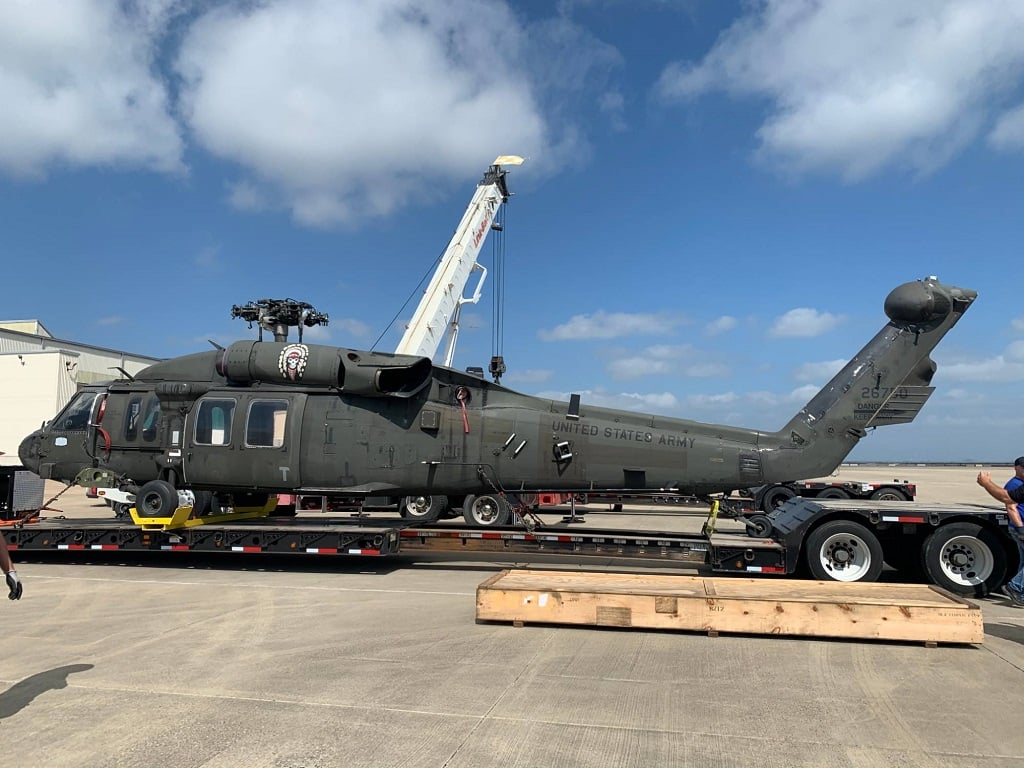
Part-by-structural- part 3D scanning of a UH-60L Black Hawk — the Lima model — is set to create a digital twin / virtual model of the popular helicopter. Wichita State University (WSU), which is partnering with the US Army Aviation and Missile Command, explains of the task at hand:
“The Lima model of the Black Hawk helicopter has been out of production for 15 years, so most of its technology is at least that old, with some parts dating back 40 years. The digital twin opens the door to acquire parts that are out of production while building the capacity to use advanced techniques, such as additive manufacturing, to produce components.”
Researchers at the National Institute for Aviation Research (NIAR) are disassembling and 3D scanning each structural part to create the digital twin.
NIAR Reverse Engineering
NIAR is no stranger to such efforts. In a past life, I went to Kansas to check out the 2017 opening of the on-campus 3DEXPERIENCE Center at WSU. Unsurprisingly for a Dassault Systèmes center, digital twins and reverse engineering took up much of the conversation of the site tour, along with a long, deep look at aircraft engineering. All in all, the creation of this Black Hawk digital twin fits in neatly with what I saw first-hand at the site, and it’s heartening to see such work continue.
Taking things apart to put them back together again isn’t just a great way to learn about engineering — it’s a great way to rebuild. Having fully dimensionally accurate scans that can be digitally pulled apart and put together is a strong step toward making and remaking. This can come in handy when, say, the build to be put together no longer has original parts available.
3D printing is coming more frequently into play for digital inventories, and this looks to be the case in the case of the Black Hawk.
Efforts with this helicopter represent a starting point on what sounds to be a long journey, as WSU explains:
“This is the first Army aircraft to enter a larger military effort with NIAR for legacy aircraft sustainment.”
Through digitally twinning the parts and 3D printing new components as needed, the partners on this project hope to keep Black Hawk helicopters in the air for decades to come. Digital manufacturing offers some strong points in its favor over traditional techniques.
“As with other enduring military systems, the Army is often dependent on a single-source provider or faces challenges in obtaining certain parts. In turn, potential manufacturers must rely on 2-D drawings, many with changes and updates, that make it difficult to interpret, bid or produce the part,” WSU notes.
Some parts in traditional supply chains can require two years or more to obtain — rather a hindrance when they’re needed more immediately.
WSU further explains that this digital twin project “connects NIAR experts with the Army and Sikorsky – the original equipment manufacturer – to convert all legacy 2-D drawings into 3-D parametric models.”
Army Digital Twinning
This project is one step along the path for the Army to maintain or even increase the size of the current fleet, as NIAR Executive Director and SVP for Industry and Defense Programs John Tomblin noted.
WSU has been working with the US Department of Defense for 15 years, creating commercial digital twins for 10 years — and, since 2018, putting the two together to work on DoD digital twins. These will continue to progress, with the disassembly of a US Air Force B-1 bomber this summer.
Along with digital twinning, WSU and Army work will also examine robotics and machine learning technologies. Ultimately, the DoD is working toward bringing more next-generation tech into its supply chain and logistics operations.
Via WSU
